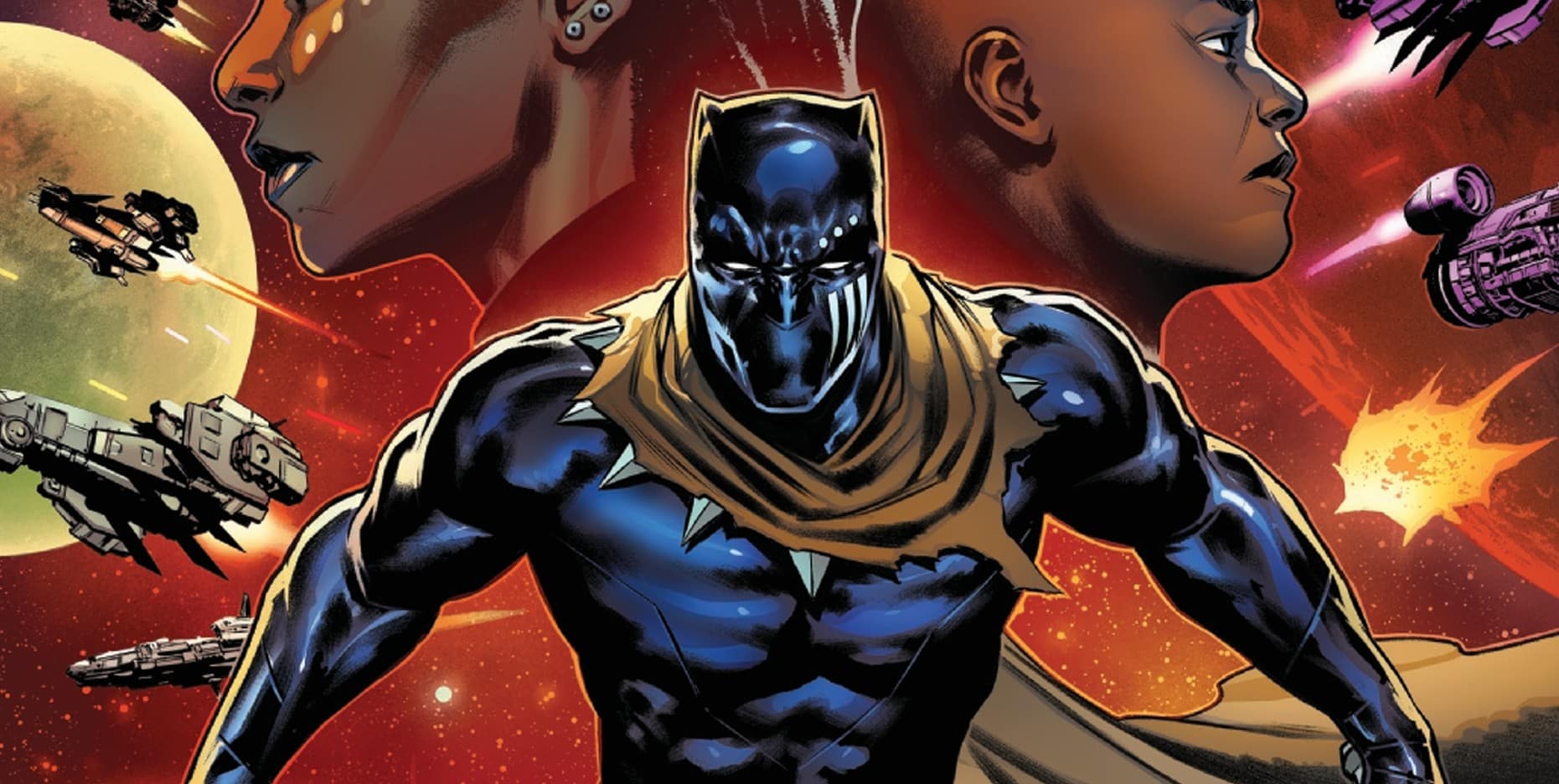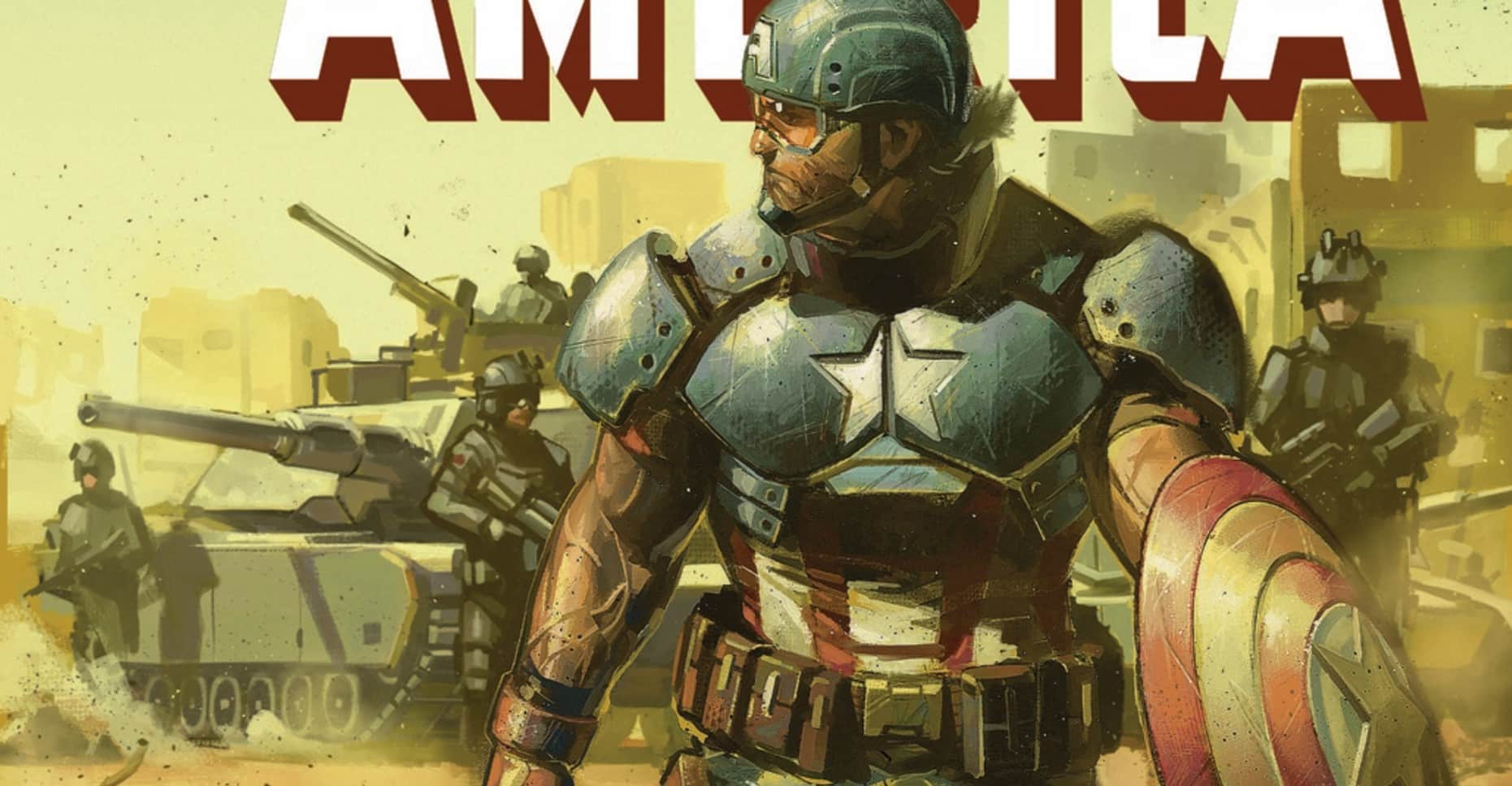Hello friends and readers and welcome to another week of Marvel Minutiae. We have a true hodge-podge this week as newcomer Ian Gregory looks into 2020 Machine Man while our two esteemed editors Chris and Zack dig into returning favorites Valkyrie: Jane Foster and Runaways!
2020 Machine Man #1
I’m an X-Men fan, which means I’m no stranger to doing my homework to understand a story. Just take X-Men #5, released a few weeks ago, which drew story elements from Ultimate Comics: Ultimates and Mike Carey’s X-Men. That said, nothing could prepare me for the storm of continuity contained in 2020 Machine Man. Machine Man is a challenging character to write for a number of reasons, not the least of which is his tenuous place in Marvel continuity. The entire Iron Man 2020 crossover event, which spans seven different titles, only complicates matters.
Look, folks: Machine Man was originally created by Jack Kirby (!) in 1977 (!!) in an issue of 2001: A Space Odyssey (!!!) [Ed. Note: Eventually they just let the King do his thing]. In 1980, Machine Man appeared in Marvel Two-In-One #92-93, written by Tom DeFalco. He teamed up with the Thing to save Jocasta from the resurrected Ultron, and in the process the two fell in love. Jocasta promptly died, Machine Man was given her head as some sort of memento and the two never interacted again in mainstream continuity. 1984 saw the release of a four-part Machine Man miniseries written by Tom DeFalco, with art duties by Herb Trimpe and Barry Windsor-Smith. Set in the far-flung year of 2020, Machine Man fought against the nefarious machinations of Sunset Bain (a long-time enemy) and Arno Stark (first appearance). In the process, he tried to rescue Jocasta to reclaim their supposedly eternal love. This series is obviously non-canon, except when it isn’t. Arno Stark would reappear in a number of other series, mostly with time travel, before making his main-timeline continuity debut in the early 2010s. Machine Man’s next most notable appearance was in Warren Ellis and Stuart Immonen’s 2006 magnum opus NEXTWAVE: Agents of H.A.T.E. There, Machine Man had a completely new look, a foul mouth, and a hatred of fleshy humans (a far cry from his benevolent, Silver Age attitude). NEXTWAVE established Machine Man’s new character as a massive jerk, and was brought officially into continuity by Al Ewing in Mighty Avengers (2014), as the events of the comic were previously believed to be a mass delusion on the part of the team members.
Great, now you have the bare basics needed to comprehend what’s happening in 2020 Machine Man. Writer Christos Gage (in collaboration with Dan Slott over on Iron Man 2020) clearly realized that something had to be done to reign in Machine Man’s character. In this comic, as in Iron Man 2020, Machine Man swears with NEXTWAVE’s iconic skull-and-crossbones grawlix. His appearance and mannerisms are drawn from NEXTWAVE, even while the plot is based on his earlier appearances.
The first page of the issue recaps Marvel Two-in-One while also implying that the Machine Man knew Jocasta for more than 24 hours, making their relationship slightly less absurd. This retcon conveniently supports previous writing of Machine Man and Jocasta having a meaningful relationship, while also clearly establishing his single-minded goal in this series. Machine Man then has to fight his way through older versions of himself – specifically, defunct X-models infected by Arno Stark. As Machine Man tears up one predecessor, he laments that his literal past must die for him to move forward. It is, perhaps, a little too on the nose.
When Machine Man encounters Jocasta for a second time, she accuses him of having severe anger management issues. She compares two panels (literally, they display on computer screens), one from an older Machine Man series and one from NEXTWAVE, claiming they took place just a few years apart. (Reader, here we are confronted with one of the great conundrums of Marvel Time: these stories were written decades apart). Gage is clearly trying to reconcile the kind-hearted and plain-talking Machine Man of the 20th century with Ellis’ comedy character. It works, for the most part, in addressing the massive changes the character has undergone. That said, Machine Man is still an incomplete character. His sole motivation here, besides his hatred of humans which is continually played for laughs, is his obsession with Jocasta, which is called out as being stalker-like in the text [Ed. Note: Still gross though!]. The main story ends, fittingly enough, with Machine Man being blasted by his replacement: the Machine Man of 2020 (styled after his classic appearance).
2020 Machine Man has a tall task, and does its best to both advance its crossover and correct some of Machine Man’s most egregious continuity pile-ups. At the same time, however, it revels in its deep history. There’s a friction between how the book tries to correct Machine Man’s history while simultaneously enjoying it. On top of that, Tom DeFalco is writing a backup story here featuring the Midnight Wreckers, a group of robot scavenger side-characters who appeared previously in his 1984 Machine Man miniseries (congrats on making it to main continuity!). 2020 Machine Man is ultimately a confused comic with too much on its plate and barely any time to have fun, but it’s a definite treat for continuity-heads (what must be the sole audience of Iron Man 2020).
Ian Gregory is a writer and co-host of giant robots podcast Mech Ado About Nothing.
Valkyrie: Jane Foster #8
Friends I have fallen off of the Valkyrie wagon as of late, even though it featured the talents of Al Ewing and Jason Aaron, who are amongst my favorite comic scribes. It’s not really the fault of the series per say but, alas, we can only be subjective consumers of our graphic media. That being said, the addition of Torunn Grønbekk to the writing team along with a return to Cafu art duties made this an intriguing pick-up for this new arc.
Anyway, this cover promises “Anti-Life” which immediately made me wonder why DC hadn’t trademarked that term. Soon, we dive into a large stakes tale in which Valkyrie teams up with all of the Avengers, and later only Thor, to get to the bottom of an invasion of soul-consuming creatures from within the Earth. This scene definitely underscored the big-threat feel of this new enemy along with the necessity of the team-up between Asgardians. Plus the art team got to sculpt a lot of excellent shots of superhero brawls.
Soon enough, we get some exposition (which in this case is my favorite part of the issue), in which we learn that these creatures are a part of the Rokkva, or the Anti-Life, and that one of the early kings of Asgard tried to control this force, only for it to confuse him. I thought this was a really neat bit of Norse-inspired worldbuilding and it’s similarity to The Black Winter in the Thor main title made me wish for a little overlap. The use of the World Tree, which is currently decaying in Thor, also made me yearn for a little book-to-book continuity.
All tiny gripes aside, I thought this was a nice start to a cool team-up arc between Thor and Valkyrie, although it spent a bit more time on the inciting incident (with lots of Avengers appearances) than I would have preferred (although Mr. Horse is the breakout character of this book and we would all die for him). The writing is engaging with lots of references to Jane being the hero who flits between the realms of life and death. The art is dynamite, with tons of kinetic action and a beautiful color palette. It’s looking like this new arc is going to put more good stories under the wings of Jane Foster.
Chris Eddleman is a biologist and co-host of Chrises On Infinite Earths.
Runaways #30
My wife and I recently completed the third and final season of Marvel’s Runaways. It took us two months to get through ten episodes of a show we had previously enjoyed a ton. It took a drastic shift from teen drama to weird show that’s mostly about Morgan le Fay trying to take over the world with cell phones. Needless to say, the shift to a weird urban fantasy vibe didn’t work for the show in all the same ways that Runaways becoming a superhero book does work for the comic.
Better than anyone, including Brian K Vaughn, Rainbow Rowell understands what makes these kids tick. At their core, they aren’t heroes, they are just misfits who are more concerned with who is kissing who than stopping Doctor Doom [Ed. Note: Are we sure they aren’t comic readers?]. Because of that dynamic, their misadventures becoming the new J-Team have been a delight to watch. They are reveling in the attention of becoming stars in that LA influencer culture, much to the chagrin of Gertrude Yorks. Gert thinks something smells fishy, and has for this whole arc. As we barrel towards the climax, those fears are being realized.
The secret weapon here is Andrés Genolet, an artist whose character acting is second to none. These Runaways are expressive, their faces carry the weight of a script built on big teenage emotions. It doesn’t matter that the framing of the story is so far removed from a traditional Runaways tale, the emotional core grounds the story in their corner of the universe. The change in the general concept doesn’t matter because, unlike the TV series, this comic remembers why we fell in love with it.
People have been sleeping on Runaways, but it might be the most consistently high quality book Marvel has been putting out over the last few years. If you are one of those fans who loves to dream about an X-Men book where all your favorite characters do boring stuff and talk about their feelings, you deserve to check out this comic.
Zachary Jenkins runs the Xavier Files Media Empire and is a co-host on the podcast “Battle of the Atom.” Shocking everyone, he has a full and vibrant life outside of X-Men.








